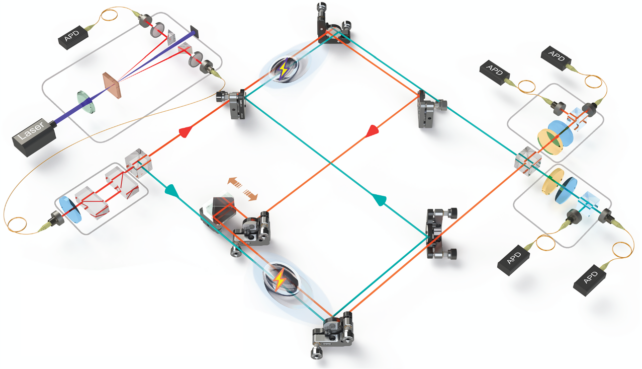In a typical battery, when the battery charges, charged ions travel one way through a large number of other particles and then hurtle in another direction to release the stored energy.
The ions move back and forth, some of them being transferred along the way, until the battery’s capacity is exhausted and the energy is lost too quickly to be used.
But physicists who specialize in exploiting strange quantum phenomena that warp time and other unusual events are imagining new ways to store energy in convenient, portable devices.
“Current batteries used in low-power devices such as smartphones or sensors usually use chemicals such as lithium to store charge, while quantum batteries use microscopic particles such as atomic arrays,” explains Chen Yuanbo, a graduate student in physics at Peking University. Tokyo.
In their latest work, Chen teamed up with physicist Zhu Gaoyan and colleagues at the Beijing Computational Science Research Center of the China Academy of Engineering Physics to test the idea of creating a quantum battery that allows for simultaneous charging stages, thereby improving energy storage and thermal efficiency.
“While chemical batteries are governed by the laws of classical physics, microscopic particles are quantum in nature, so we have the opportunity to explore ways to use them that change or even break our intuitive notions of what happens at small scales,” Chen said.
Chen, Zhu and colleagues are certainly not the first team to imagine how quantum batteries might work, but they have tested their ideas experimentally on a lab bench filled with spaced lasers, lenses and mirrors.
In 2019, a team of researchers in Canada developed a blueprint for a quantum battery that never runs out of power. Their idea is still entirely theoretical and relies on a different quantum mechanism: one that involves introducing quantum components into a “dark state” in which the material cannot interact with its environment or contribute to its environment. The environment loses energy.
Zhu and colleagues’ method stems from a quantum phenomenon called superposition, commonly referred to in quantum computing, in which particles exist in a range of possible states before being measured.
Researchers recently showed that this superposition of possibilities also disrupts the natural order of time.
In classical physics and everyday life, events can only occur in a linear manner or in a fixed order. Think about the cause first and then the effect, or think about event A (flicking the switch) before event B (the light turns on).
In the quantum realm, however, this linear order is broken, and superposition allows events to unfold along two parallel paths simultaneously. To some extent, this messes with time, because one event after another can also affect the outcome of that event as if it happened before, because the two orders of events (A before B and B before A ) are true at the same time.
“Simply put, we find that the laws of quantum mechanics allow quantum superposition of causal sequences,” Zhu and colleagues explain.
To apply it to energy storage, the researchers implemented this strange process using quantum switches, tested several different charger configurations, and created a system capable of charging from two chargers simultaneously.

“We demonstrated that the way a battery composed of quantum particles is charged can greatly affect its performance,” Chen said. “We’re seeing huge improvements in both the energy stored in the system and the thermal efficiency.”
“Furthermore, we reveal a counterintuitive effect whereby a charger with a relatively small power can recharge the battery to deliver more energy with higher efficiency,” the researchers report in their paper.
While this quantum “battery” is more like a network of lasers on a lab bench and is still years away from any real-world applications, it’s still a cool demonstration of the basic principles, and one that could be used at some point in the future. What might have happened (if it hasn’t already happened) happened in the past.
The study was published in Physical Review Letters.
#Quantum #batteries #provide #type #energy #storage #disrupting #time
Image Source : www.sciencealert.com